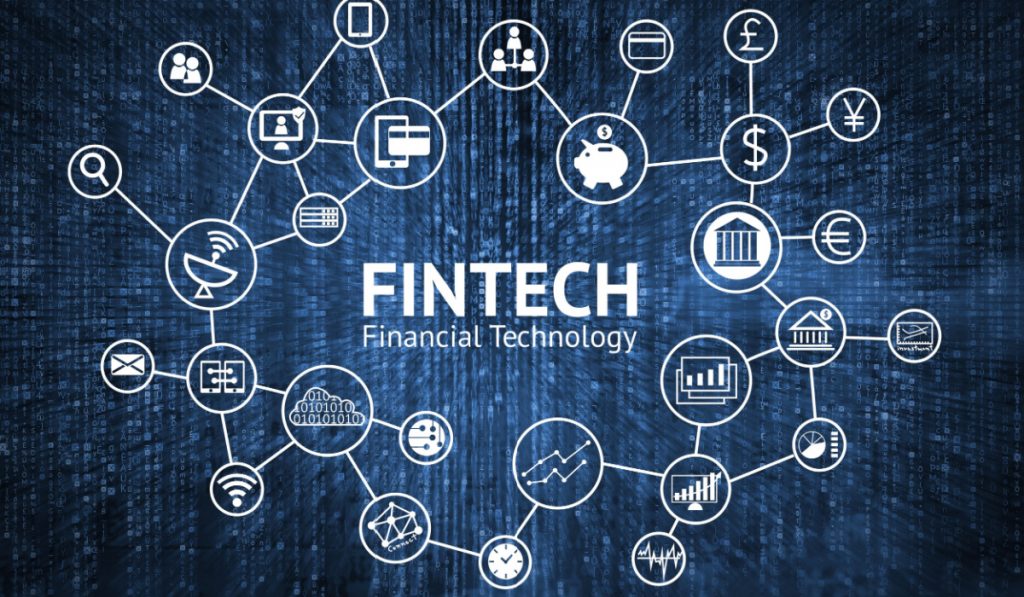Highlights:
- The growth factors assisting the expansion of fintech include technological development, operational efficiencies, data infrastructure, a growing number of financial institutions, and the need for secure financial transactions.
- Fintech is catalyzing with startups funded on venture investments and existing firms offering digital services.
Technological incorporation in financial services and transactions has gained significant traction and impetus in the past few years and is continuing to penetrate future economic operations. Fintech (Financial Technology) automates financial deliveries, services, transactions, and other procedures.
Speaking of core functionalities, the technology helps financial institutions, enterprises, companies, and customers to track and monitor transactions with the aid of algorithms and customized software on computer systems or over smartphones.
It was earlier confined to operating the back-end systems of prominent financial institutions. Later, with many updates, the technology started housing more customer-oriented operations, branching into various domains and sectors such as wholesale and amp; retail, fundraising institutes, investment firms, and private and government banking services.
Previous Fintech Scenario
The total investment value of the fintech market during 2010–2019 hit USD 215.1B. Later, the figures were reported as USD 127.7B and USD 226.5B in 2020 and 2021, respectively. The global fintech market segmentation comprises payments and amp; transfers, savings and amp; investments, digital lending, online insurance, e-commerce, financing, etc.
Driving Factors
The adoption of digital payments during and post-COVID-19 pandemic surged the growth of the global fintech market. Several feasible options, such as cash displacement, digital currencies, request to pay, and Buy Now Pay Later (BNPL) services, have added to the market expansion. The US alone reported approximately 80% of the total global investment in the fintech sector.
Future Trends of Fintech
Developing economies such as India stand among the rapidly growing fintech markets, competing with the UK in funds and startups. The growth factors assisting the expansion of fintech include technological development, operational efficiencies, data infrastructure, a growing number of financial institutions, and the need for secure financial transactions.
Let’s dive deep into the Fintech trends that will boom in 2023 –
- Reduction in physical transactions: The global pandemic stoked the demand for secure and remote transaction options, paving the way for many fintech service providers. On a large scale, consumers have shifted their preference to online payouts from conventional physical methods. Micro, small, and medium enterprises have adopted fintech services for lucid transactions. Technology helps them distinguish between large corporations’ and individual consumers’ requirements.
- Eliminating the lags in payment and transactions: Instant and quicker processing has been an integral feature of the rising fintech sector. Irrespective of the amount sent or received, the back-end algorithms need to keep the time minimal and transactions transparent at both ends.
- Ecosystem banking: These advanced services help banks and other financial institutions to augment customer experience and maintain long-term value. Customers are offered a unique, uniform solution to avoid the prevalent, complex, and inconsistent processes running over various applications. The earlier expensive and tedious applications compelled banks to explore and introduce conducive services.
- Favorable investment platforms: For several decades, the population from developing countries preferred FDs, real estate, and physical assets as investment options, with minimal knowledge of capital market investments. The low number of demat accounts penetration has been indicative of this. However, the last two years featured remarkable growth in stock investments. The latest investment options, such as stocks, bonds, real estate, cryptocurrencies, NFTs, and others, are highly technology driven and promising. These investment operations thrive on technologies like mobile and amp; net banking applications, digital wallets, or blockchain.
- Regulatory compliances: The advanced authentication and verification techniques provided by fintech companies assist the authorities in curbing digital fraud and financial breaches. Although financial institutions operate with timely and accurate reporting, some incidences of poor coordination and incorrect KYC processes highlighted the loopholes in the services provided by several fintech companies, thus, creating the demand for stringent regulations.
Neobanking- Future of Fintech
Traditional banking with long queues, waiting time, determined working hours, and security issues cannot run in pace with modern-day technology-oriented operations and customers. To tackle these hindrances, an online new-age banking service emerged with no physical locations at all, called neobank.
It offers simple digital solutions for money transfers, payments, lending, and other transactions. The services include deposition and withdrawal, debit cards, investment facilities, credits, etc. Most neobanks collaborate with licensed banks to avail of financial services, as they do not have a banking license for standalone operations.
Due to no physical branches available, a hefty amount spent on infrastructure, rent, and electricity is considerably saved. Instead, this amount is channeled toward customers as lower maintenance fees and a higher interest rate. It is remarkable to note that despite having only an online presence, neobank houses more workforce and money resources.
Gone are the days when the account opening process in traditional banks was long and tiresome, with physical visits, forms, verification, and longing periods. With neobanks, things have turned fast-paced and digital. Accounts can now be created remotely over a computer or mobile phone, getting operational within a few minutes. Even the task of depositing cheques, which was earlier entirely confined to physical visits to the branch, is now feasible with the click of a device.
The User Interface (UI) of neobanking apps is simple, resolved, and aesthetically rich. To keep up with the technological allies, even the traditional brick-and-mortar banks launched their digital apps and offerings but somewhere lagged behind neobank’s interface due to technical glitches. Neobanks work with the best tech-savvy personnel to develop, maintain, and update the graphical interface.
The RBI does not regulate Neobanks in India; hence, they enjoy a little more autonomy than traditional banks. They can keep their maintenance and transaction charges low, as they are not subject to the regulations and policies of legacy banks. Neobanking is for technology-oriented and experimental professionals willing to sail over a growing fintech industry.
Though nascent, neobanks hold immense potential to revolutionize traditional financial services. Soon, neobanking is expected to become mainstream, with governments worldwide promoting the digital payment infrastructure.
Apart from banking services, neobanking is also finding applications in Small and Medium Enterprises (SMEs) business operations, that were initially dependent on traditional financial systems.
After switching to neobanks for financial processes, most enterprises observed and enjoyed significant benefits of the fintech world like –
- Instant payouts help them save time, need lower manual efforts, and eliminate discrepancies.
- Vendor payments are made with intelligent invoice generation, and all crucial accounting platforms can be smoothly integrated.
- Some of the top neobanks currently operational in the fintech sector are Fi Money, Jupiter, Freo, and RazorpayX.
Insurtech – A Promising Trend of Modern-day Fintech
Insurtech includes the technology curated to explore efficiency and cost savings from the traditional insurance model. Insurance products and services are priced more competitively with aid from Artificial Intelligence (AI) and data analysis. Besides, claims processing, risk evaluation, contract processing, and policy underwriting have become highly effective with insurtech.
Besides providing suitable pricing models, insurtech startups are also using deep learning-trained AI to perform broker’s tasks and generate an appropriate sync of policies for individual coverage. Moreover, spontaneous and on-demand insurance is provided for the events such as car borrowing, wherein customized coverage is offered with applicable rebates.
Insurtech has changed the way of coverage execution and payment. Users can access customized coverage online without branch visits or speaking to representatives. The advanced way of data collection and processing helps frame a consistent and reliable insurance policy that meets customers’ requirements. Instead of opting for a long-term locking period, users can also prefer premiums for a specific duration. Any fraudulent activity with data inconsistency can be immediately spotted with advanced data analytics and Machine Learning (ML). Even big data assists in detecting security loopholes to prevent insurers from losses and exploitation. The major functional areas of insurtech are claims management, contract execution, underwriting, and risk mitigation. The innovations keeping it onboard are AI/ML, automation, big data, blockchain, drones, and the Internet of Things (IoT). Major financial areas with fintech penetration are roboadvisors, investment apps, payment apps, personal finance apps, P2P lending platforms, crypto apps, etc. Significant insurtech companies dominating the market are Lemonade, Dacadoo, Bdeo, Etherisc, and Avinew, among others.
Fintech Market Landscape
Fintech is catalyzing with startups funded on venture investments and existing firms offering digital services. North America has been pioneering with the most fintech startups, followed by Asia and Europe. Broadly, the user categories of fintech include business clients, B2B for banks, B2C for small enterprises, and consumers. The growing advent of mobile banking, data analytics, and data decentralization will cater to more opportunities for all industries. The business owners used to visit banks to fetch finances or startup capital. To procure credit card payments, they had to establish a relationship with credit providers and install necessary infrastructure, including landline connections. With the advent of fintech services, these traditional obstacles are obsoleted.
Bottom Line
The advent of multiple financial software and evolving technological innovations are expected to drive the fintech market in 2023. Experts in the early developmental stage perceive the technology as promising to penetrate more domains and verticals. The three years post-global pandemic witnessed surging adoption of fintech services due to massive demand for remote transactions. In the later developments of the technology, it is anticipated that people would be using it for almost entire financial requirements, as it is becoming more flexible and user-friendly. E-commerce is going to enjoy surplus benefits such as increasing payment gateways, simplified personal and business transactions, credit provisions through apps and sites, portals with state-of-the-art interfaces, and an easy account setup process. Physical bank visits are going to decline significantly due to remote online assistance.













